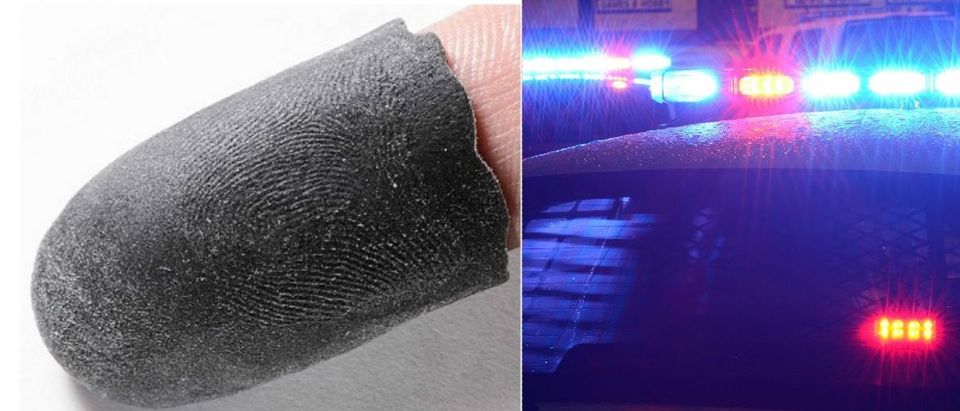A computer science professor and his PhD student 3D-printed a replica of a murder victim’s fingers in an effort to unlock the victim’s phone.
The DCNF spoke with Michigan State University PhD student Sunpreet Arora, who along with professor Anil Jain, was approached by law enforcement officials to help solve a murder mystery. Arora and his professor were not able to share details regarding the ongoing murder investigation, but they were able to discuss the science behind replicating a human fingerprints.
The case involves a man who was murdered, and police believe that information stored on his phone may provide clues on who murdered him. The police cannot access the victim’s phone without either a password or his fingerprint.
Jain is a computer science professor who works on biometric identifiers such as facial recognition programs and fingerprint scanners. Jain along with his PhD student Arora, have been researching methods to enhance biometric-based security features on smartphones.
One way to gain access to the phone would be to ask the company that made the phone to grant them access, as the FBI famously asked Apple to do following the San Bernardino terror attacks. The widely covered dispute over gaining access to the iPhone of the deceased San Bernardino shooter which was locked by a passcode highlighted major concerns and balancing of interests between technology companies and national security officials. Apple even went as far as to defy the FBI in an open letter.
Instead of asking for a backdoor entrance into the murdered victim’s phone, the police approached Arora and Jain, asking that they replicate the victim’s fingerprints in order to access his smartphone to search for any evidence that may assist in solving the murder mystery. Jain is a computer science professor who works on biometric identifiers such as facial recognition programs and fingerprint scanners. Jain along with his PhD student Arora, have been researching methods to enhance biometric-based security features on smartphones.
Arora explained that the murder victim’s fingerprints were already on file due to previous run-ins with the law, which Arora and Jain used to create the 3D model. Arora explained to the DCNF how the process works to create a 3D replica of someone’s fingerprints. First, they take the 2D ink impressions of the fingerprint and scan the impression onto a computer, creating a digitized version of the fingerprint.
The next step is to map the 2D digitized fingerprint image on to a 3D surface (which of course, is in the shape of a finger). They then use a rubber-material that is similar to the surface of a finger, and the 3D image is scanned and imprinted onto to the physical, rubber replica of a finger. The last step is to spray a metallic coat over the replicated finger in order to give it the electrical properties of the human body.

(Sunpreet Arora / Michigan State University).
Arora explained that the 3D printed finger is not enough to unlock the smartphone. In the cell phone industry there are two types of touchscreen displays, capacitive and resistive. Resistive touchscreen displays are made up of multiple layers that are separated by thin spaces. Pressure applied to the surface of the display by a finger causes the layers to touch which completes electrical circuits and alerts the device as to where the user is touching.
Modern smartphones use capacitive touchscreen displays which relies on the electrical properties of the human body to detect when and where on a display the user touches. Arora explained that a rubber mold that resembles a finger does not have the electrical properties similar to a human finger, and so a thin layer of metallic coating is sprayed onto the replicated finger mold which is conductive enough to replicate the electrical properties of a human finger.
When asked if the ability to replicate the human fingerprint will render fingerprint-passcodes useless, Arora disagreed. “It is a game of cat and mouse.” He surmised that, “While we are now trying to hack into the phone using this technology, there will be someone who may develop a method to block the ability to use a replicated finger. This project will help improve the security of phone sensors.”
While Arora and his team were unable to discuss specifics surrounding the specific murder investigation, the DCNF has learned that the phone involved in the investigation is an Android phone, and that the request came from a local police department in conjunction with a state law enforcement official, but no federal authorities were involved.
Send Tips to ted@dailycallernewsfoundation.org.
All content created by the Daily Caller News Foundation, an independent and nonpartisan newswire service, is available without charge to any legitimate news publisher that can provide a large audience. All republished articles must include our logo, our reporter’s byline and their DCNF affiliation. For any questions about our guidelines or partnering with us, please contact licensing@dailycallernewsfoundation.org.


